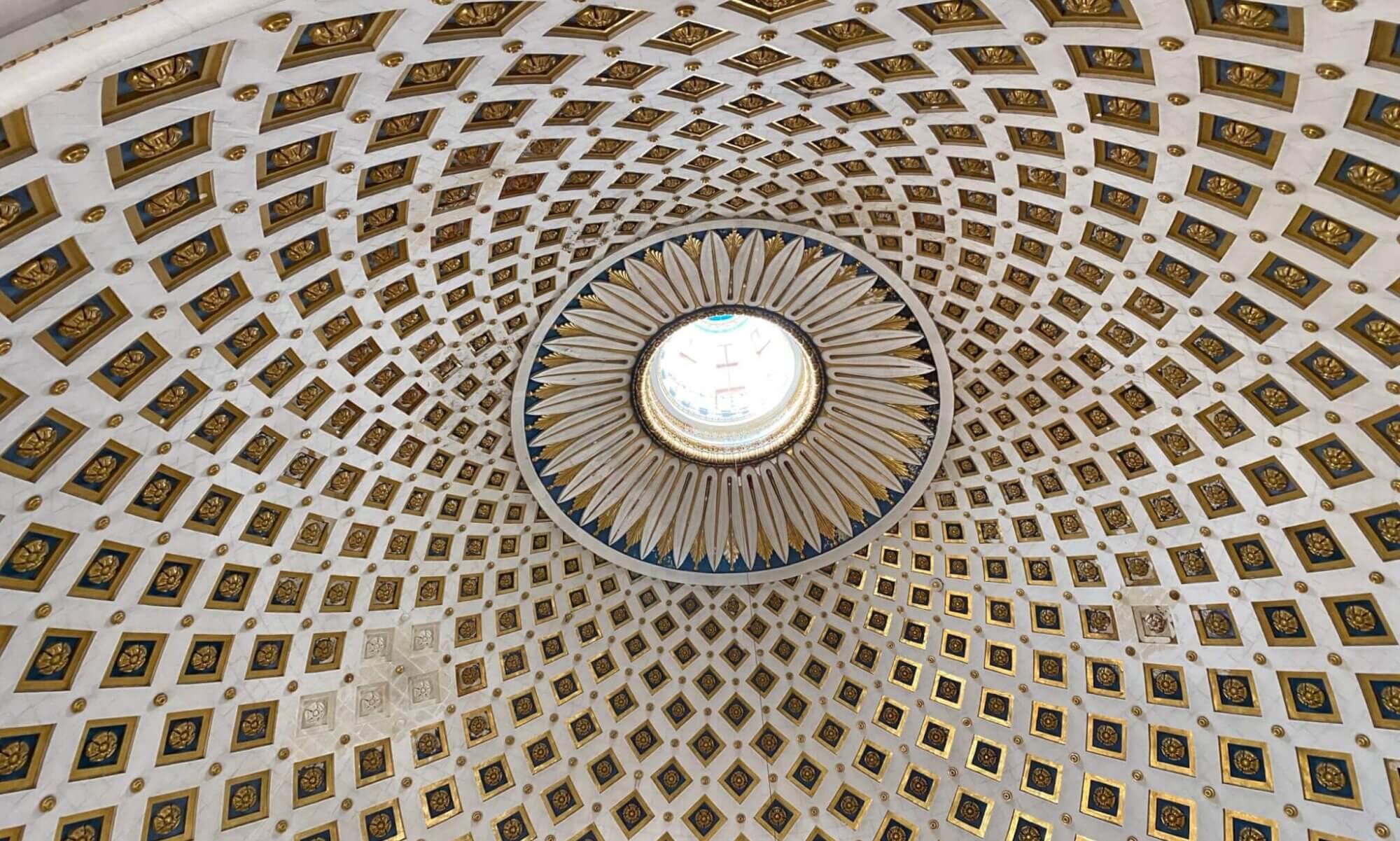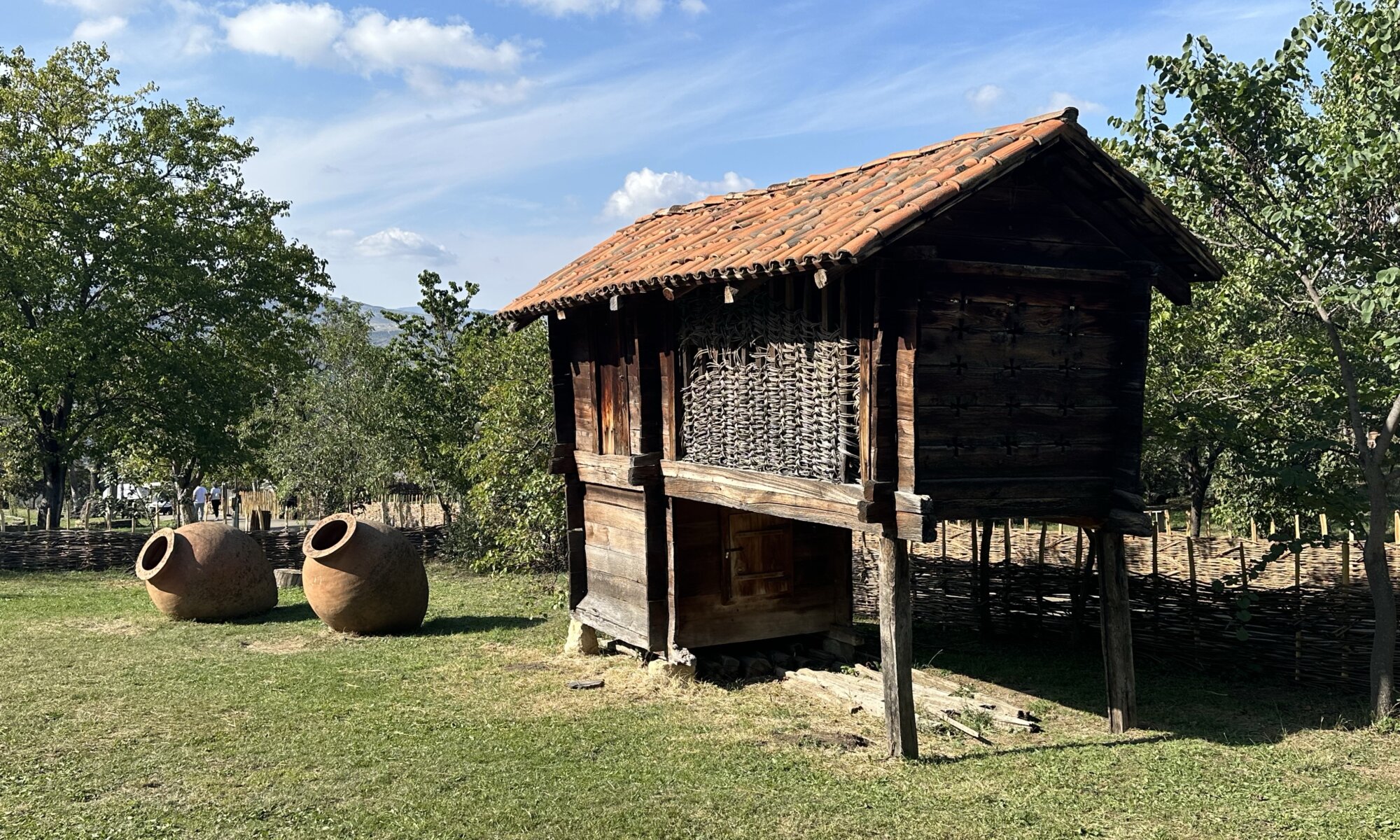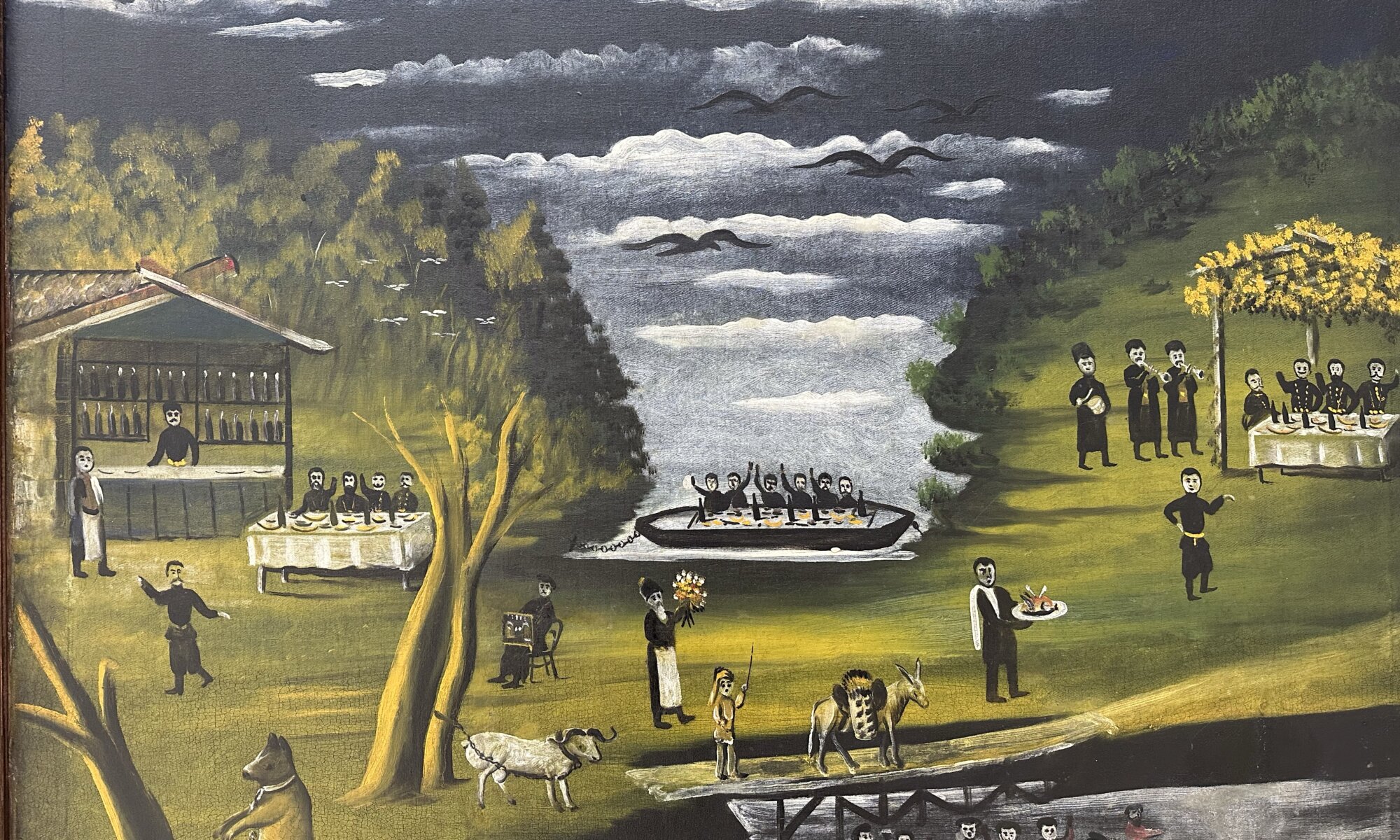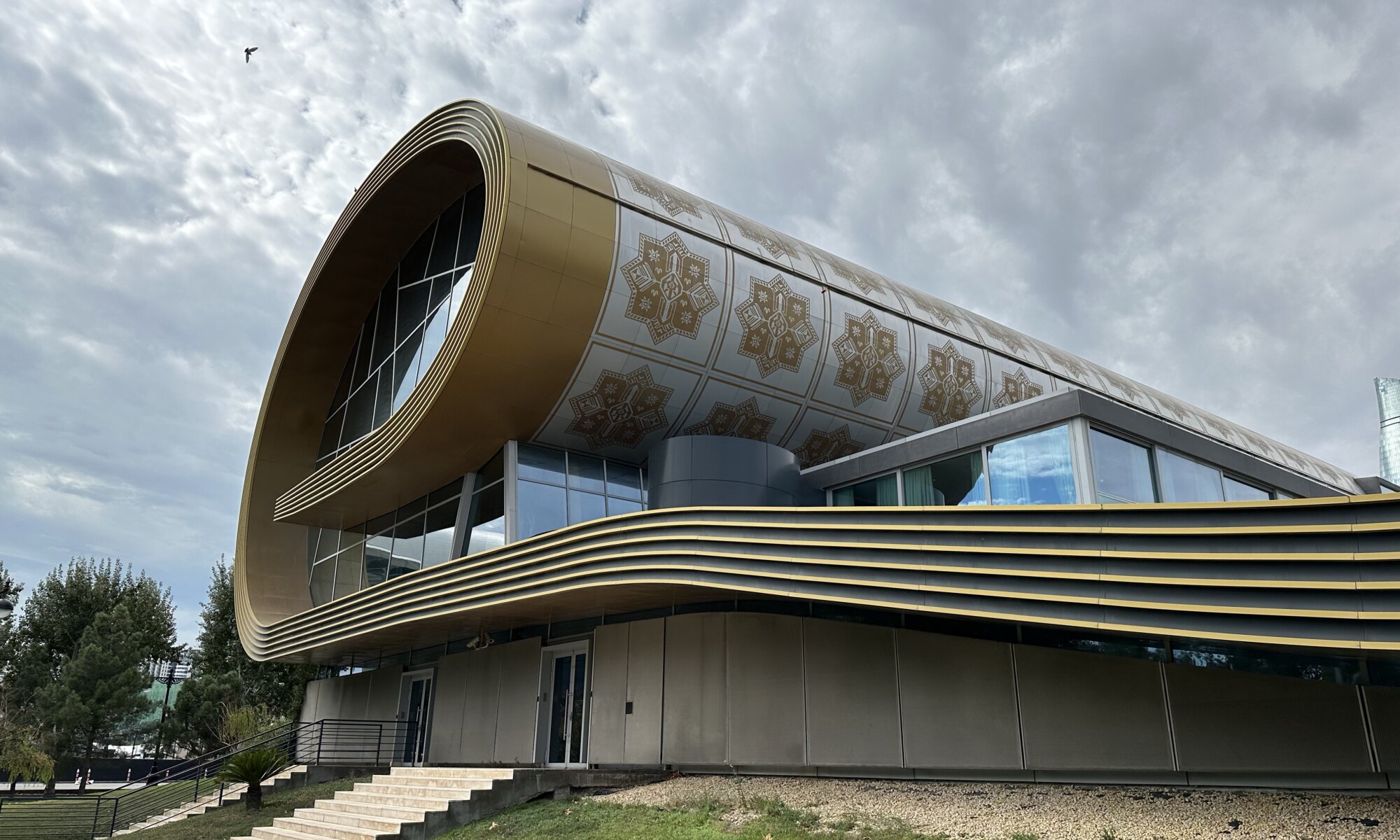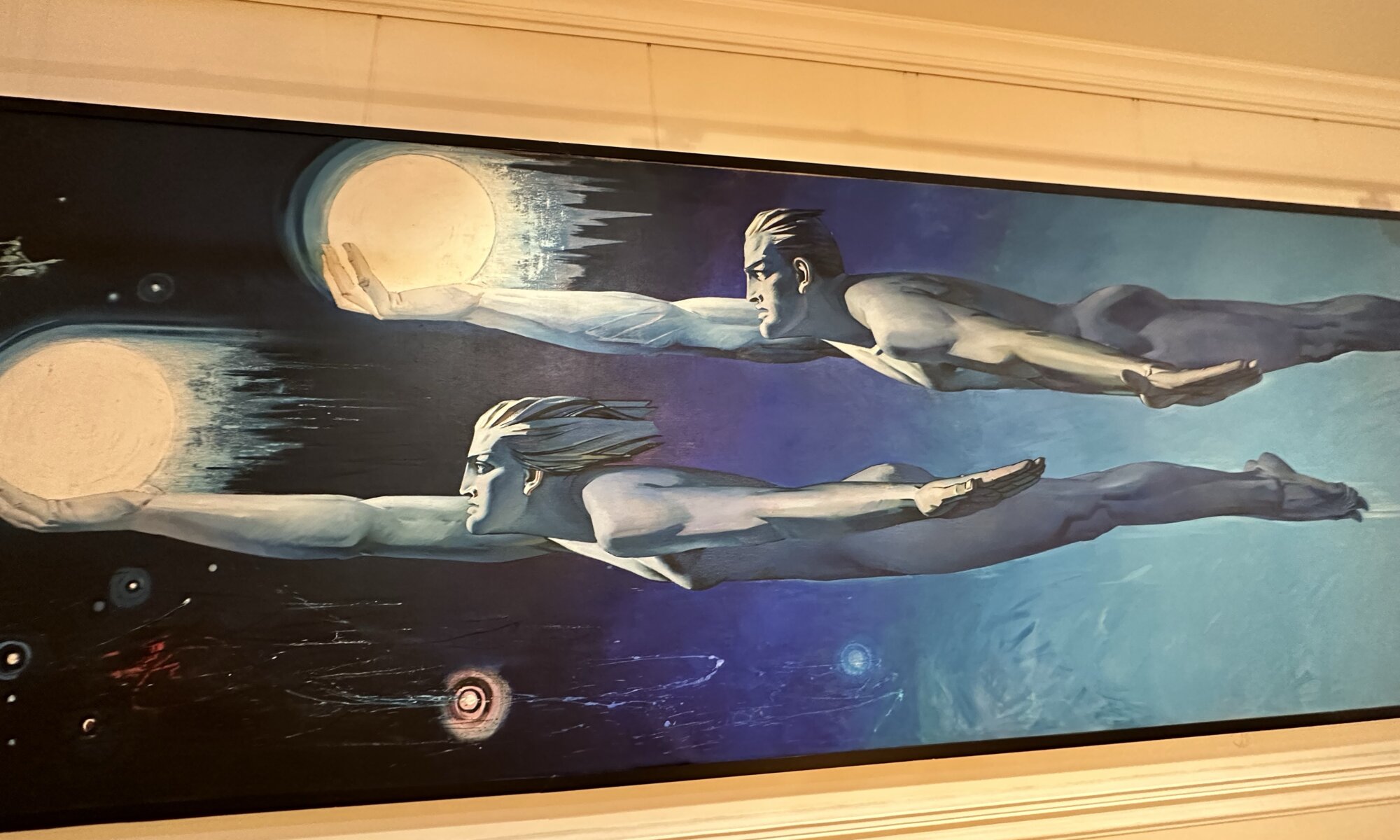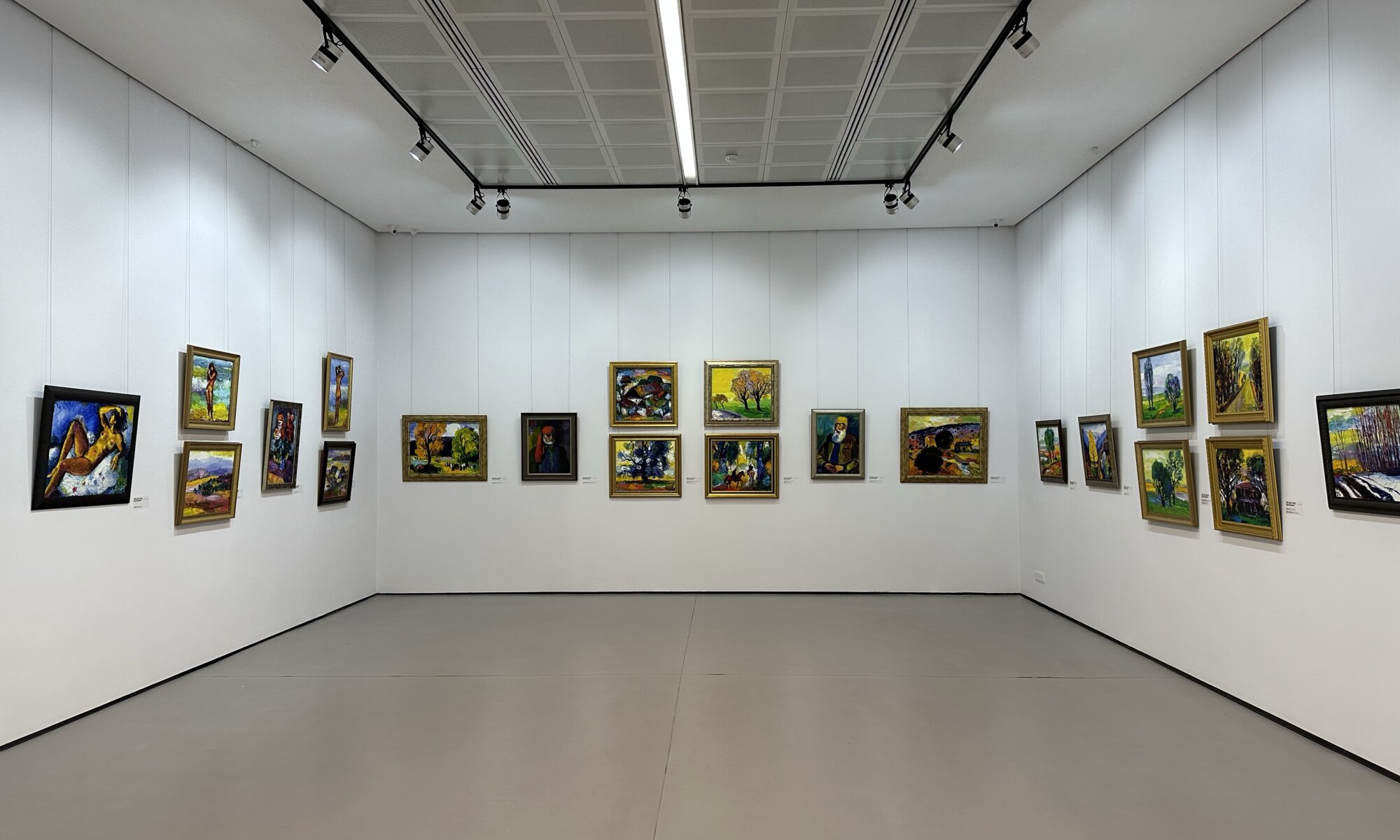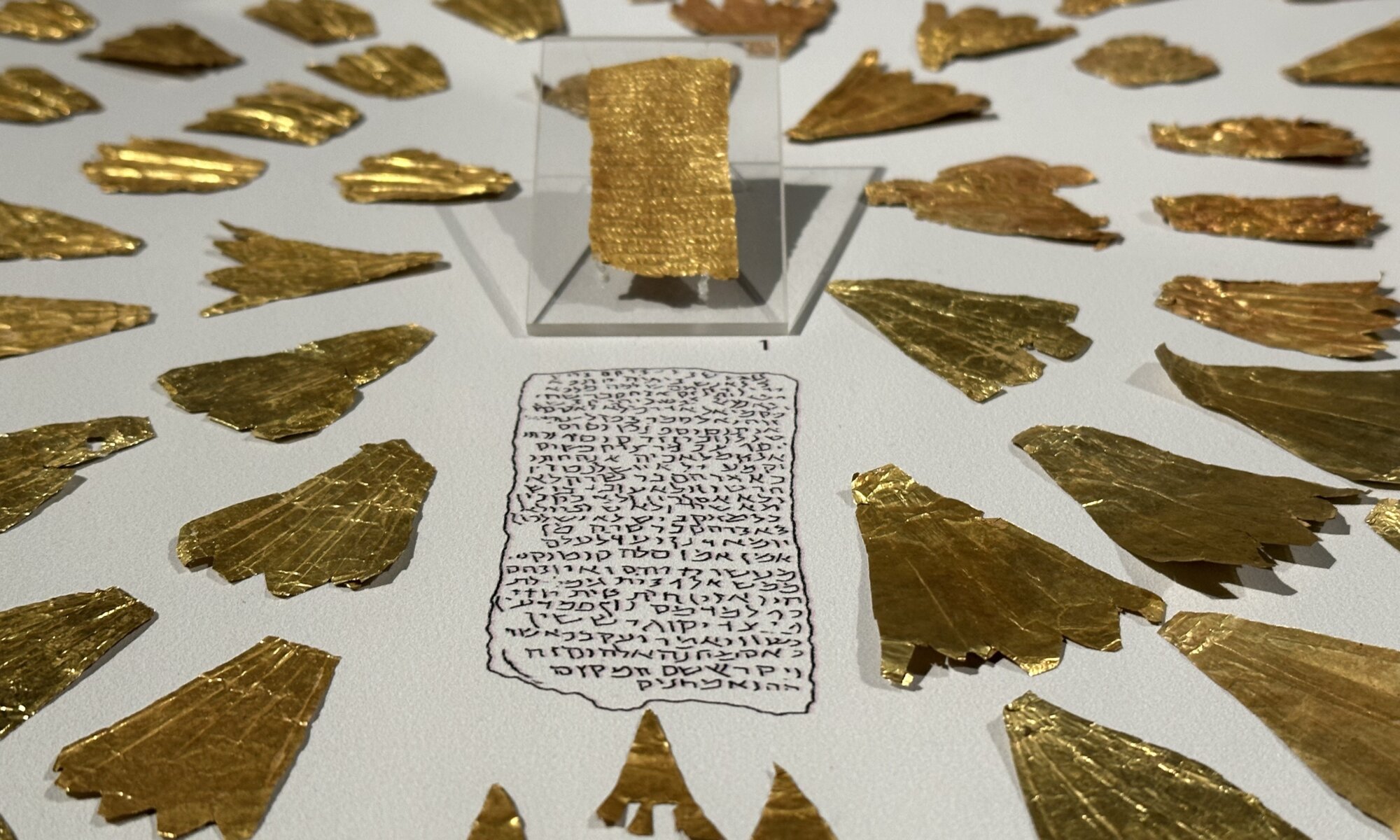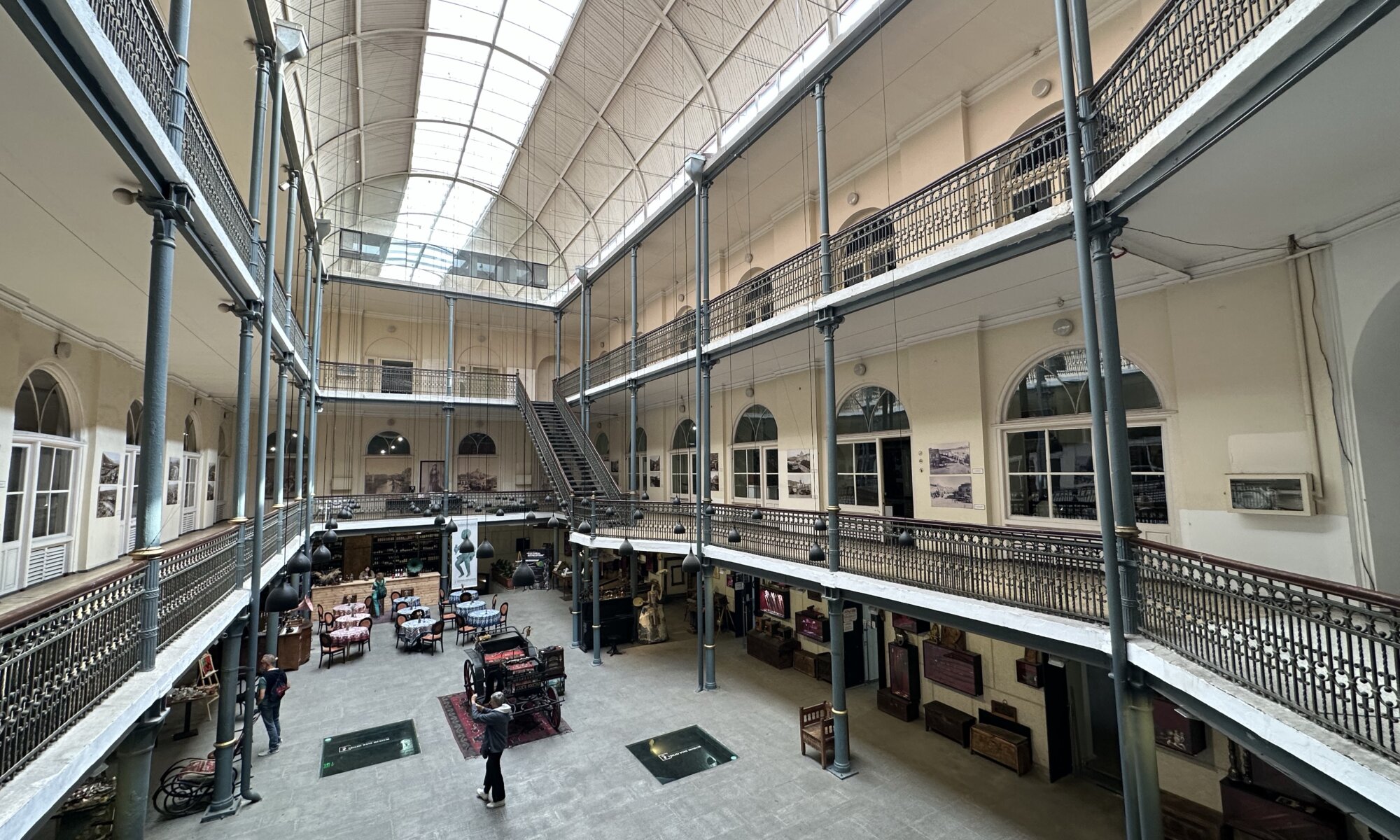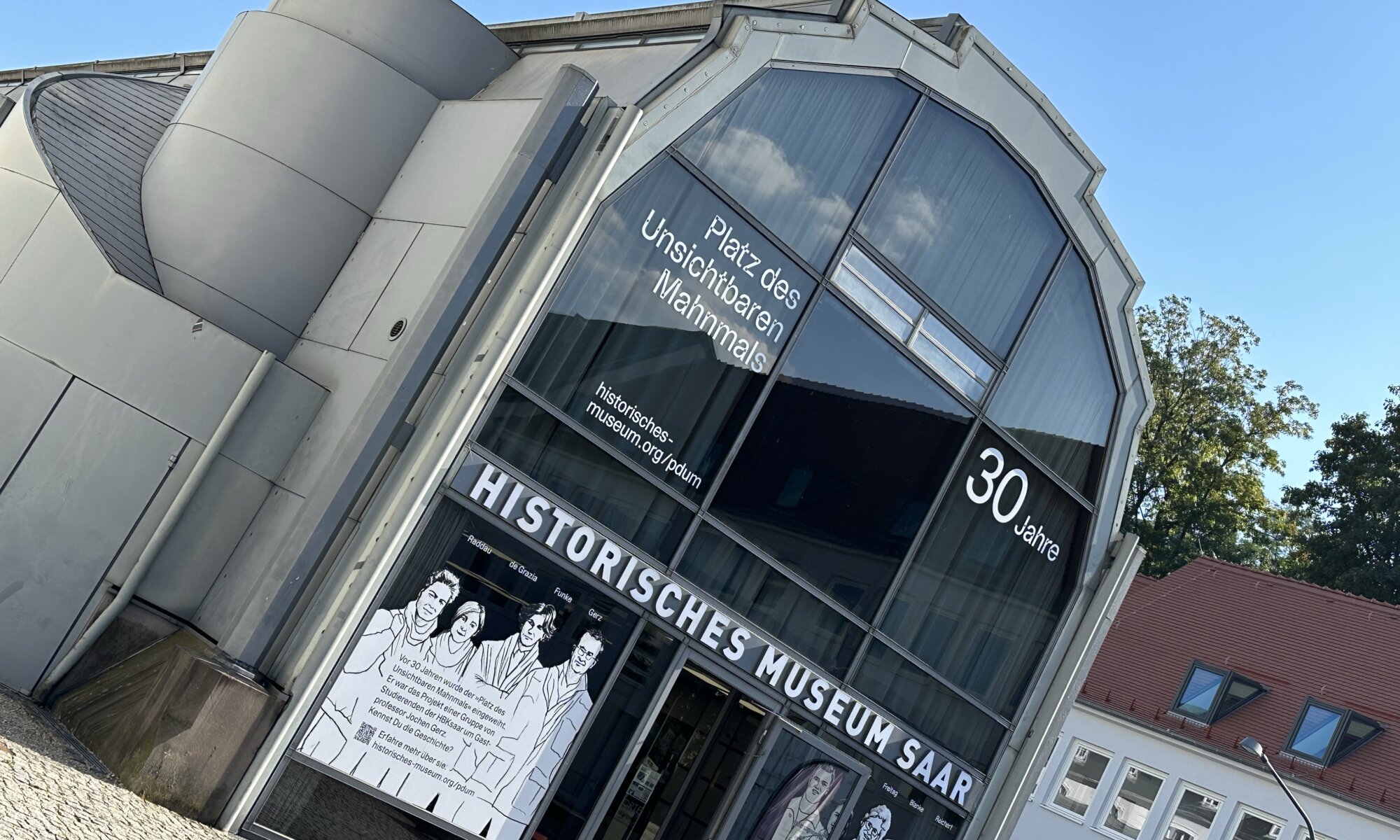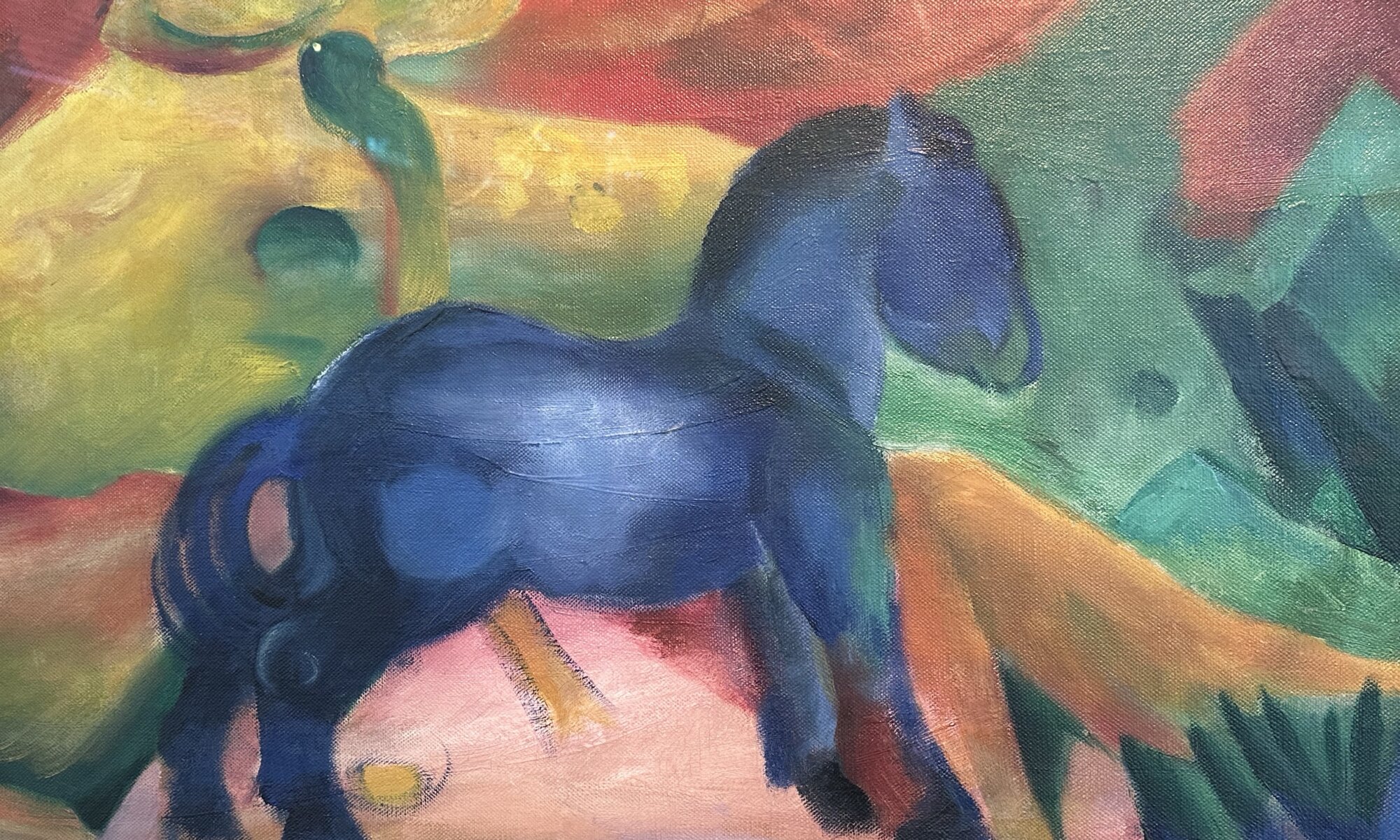The ethnographic open-air museum is located close to the turtle lake in a hill south of the city center of თბილისი. Since 1966 it collects, preserves and exhibits buildings from all regions of Georgia. This includes classic farm houses, a vineyard building, a church and a water mill.
Continue reading “Georgian architecture”National gallery
If you like to enjoy the artworks of local artists you shouldn’t miss the national gallery of თბილისი. It is located at the Rustaveli avenue and surrounded by the 9th April park (remembering the peaceful uprise in 1989). The gallery is a modern art exhibition hall that shows well-made exhibitions on two floors.
Continue reading “National gallery”Azerbaijani avant-garde
The Museum of Modern Art (Müasir İncəsənət Muzeyi) at Bakı is an unexpected gem aside of the areas typically visited by touristis – the old city center is far away, even the boulevard stretching along the shore ends before you reach the museum. Once you’ve found your way you’ll be rewarded with a large collection of contemporary Azerbaijani art in a very special museum building.
Continue reading “Azerbaijani avant-garde”Xalça Muzeyi
Carpet making has a long tradition at Azerbaijan. There are different schools for that and every region has its unique style. To remember that and to built a bridge between the traditional and the new Azerbaijan the new carpet museum (Xalça Muzeyi) has been opened at Bakı in 2014 directly at the shore of the Caspian sea. The architecture of the museum is special as it copies the shape of a rolled-up carpet (or a jelly roll) – a nice idea, but it seems to make presenting the collection of carpets and rugs a bit uneasy.
Continue reading “Xalça Muzeyi”National art museum
A fantastic collection of art can be found southeast of the İçəri Şəhər of Bakı: the Azərbaycan Milli İncəsənət Muzeyi (national art museum). It was founded in 1936 and contains 17,000 items of which 3,000 are on display in two buildings dating back to the first oil boom in Azerbaijan. And that is already the most important thing you need to know: the museum consists of two buildings that are connected and which you both need to see.
Continue reading “National art museum”Fine arts
The Georgian Museum of Fine Arts is a modern art museum at თბილისი and it is probably the museum I like most in the capital city of Georgia. Privately owned and located on Rustaveli avenue it houses a massive collection of Georgian art – from artists you probably haven’t heard in western Europe or the rest of the world. That is mostly because these artists created their works mostly during Soviet times and the Iron Curtain prevented them getting known on the other side. A perfect chance to change this!
Continue reading “Fine arts”Georgian national museum
If you like to visit museums at თბილისი there is one place to be: the Shota Rustaveli avenue starting north of Liberty square. A wide boulevard with historic buildings containing the national gallery, the national museum of fine arts and the Simon Janashia Museum of Georgia, which is part of the Georgian national museum complex. It contains a vast collection of archeological and ethnographic artefacts giving insight into the development of the culture, the people and the state of Georgia.
Continue reading “Georgian national museum”City history
The city history museum of თბილისი can be a nice place for visitors or a disappointment; that’s depending on your expectations. The building with an art nouveau facade dates back to the 19th century and copies the structures of an ancient caravanserai of the Silk Road. It contains the city history museum on the ground floor and a bar, a wine museum and some shops in the basement. I found the building itself to be really beautiful but the museum could really be extended. The city history museum is located on Sioni street next to the Sioni cathedral.
Continue reading “City history”Historisches Museum Saar
If you want to learn about the history of the Saarland then the Historisches Museum Saar, located at the Schlossplatz of Saarbrücken, will leave no questions unanswered. The Saarland is not only the smallest federal state of Germany, it also has a special history: it was created in 1920 caused by the Treaty of Versailles and became a separate state for 15 years under the coordination of the League of Nations.
Continue reading “Historisches Museum Saar”Little Blue Horse
Franz Marc is the most important German painter working in Expressionism style. His best known works do focus on animals and especially on horses: the Blaues Pferd I can be found at the Städtische Galerie im Lenbachhaus at München, his Turm der blauen Pferde is considered lost since 1945 (after being confiscated as Entartete Kunst by the Nazis and taken by Hermann Göring). But there is another painting showing a blue horse, a cute one: Kleines Blaues Pferdchen has been painted by Franz Marc for Walter, the son of befriended painter August Macke.
Continue reading “Little Blue Horse”